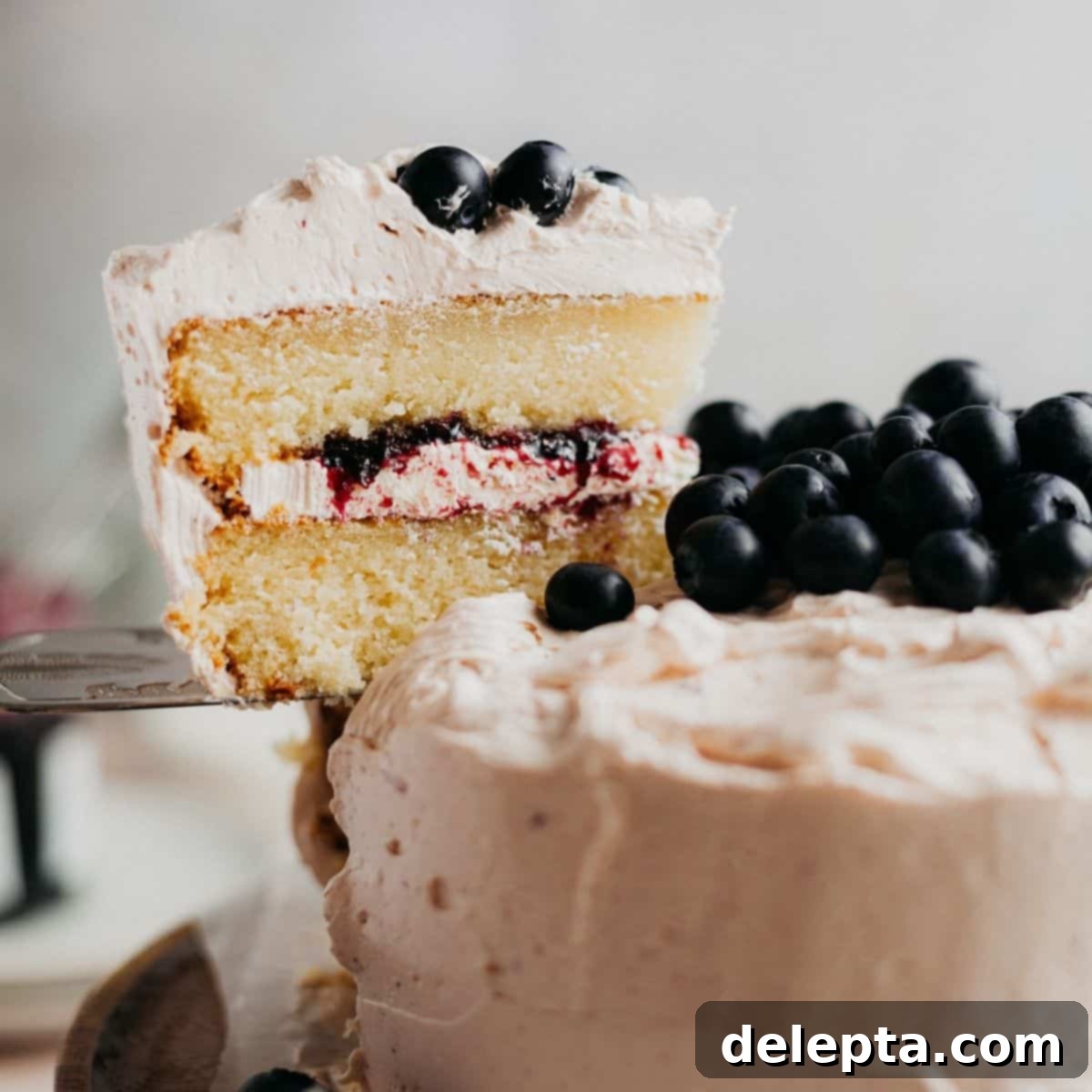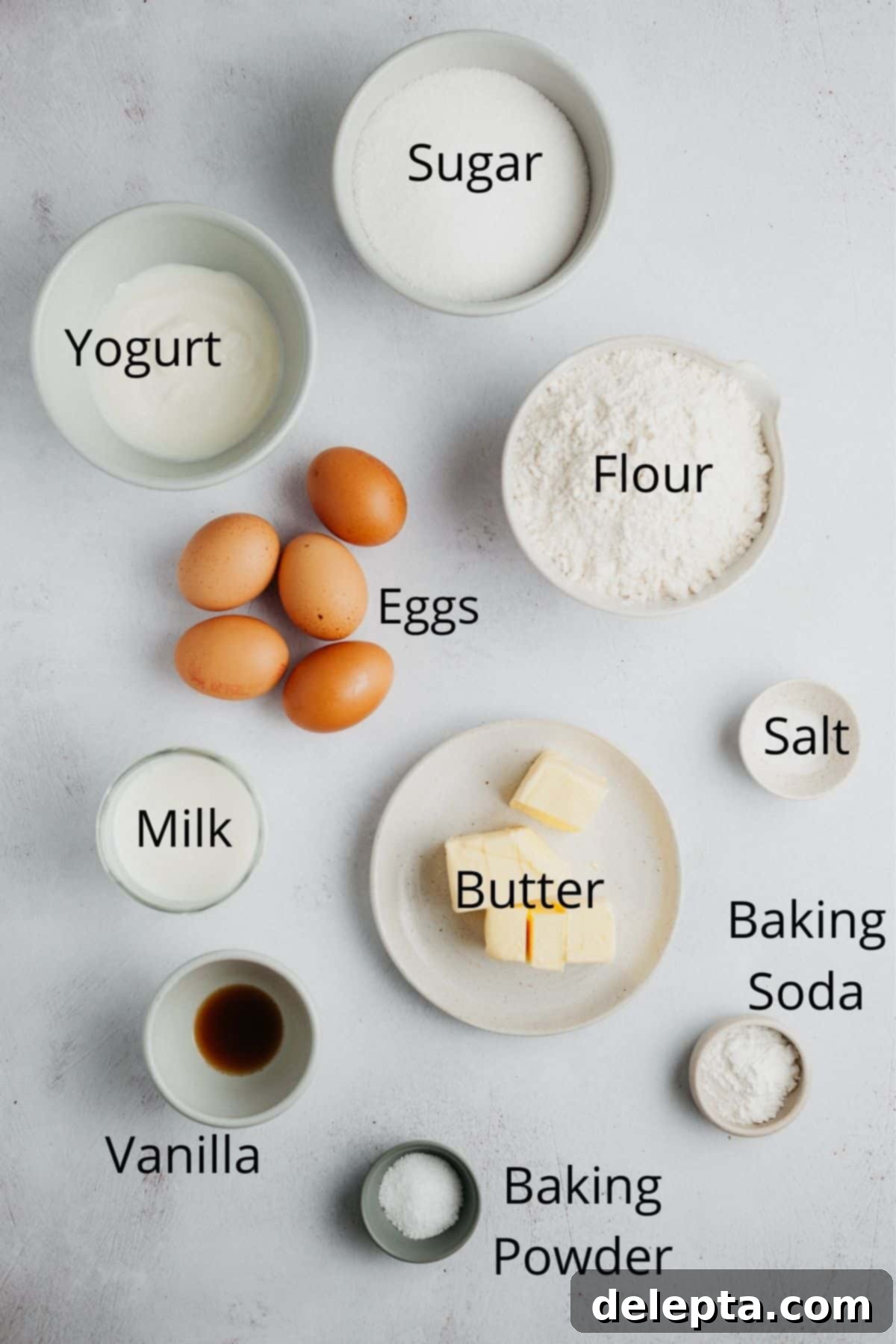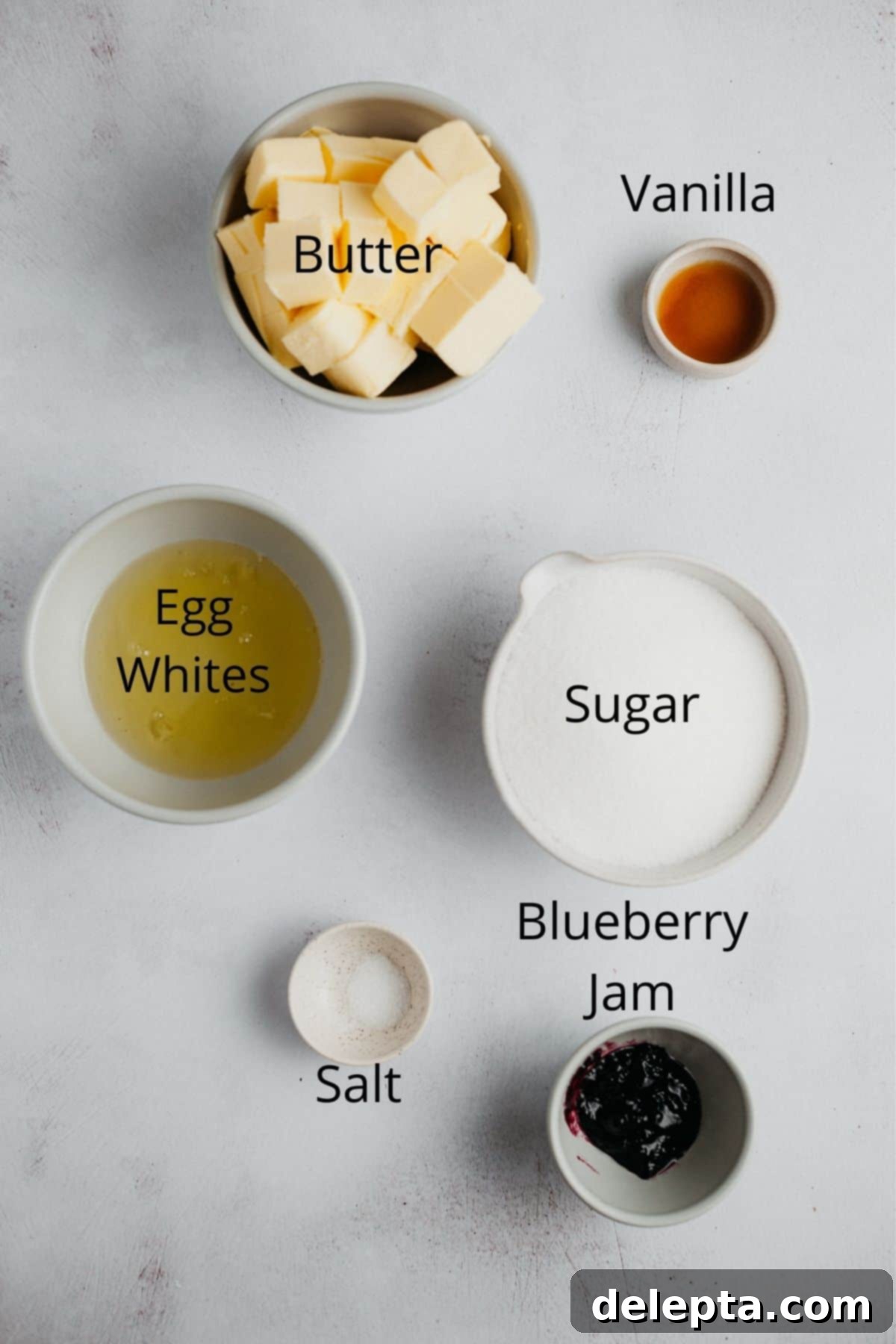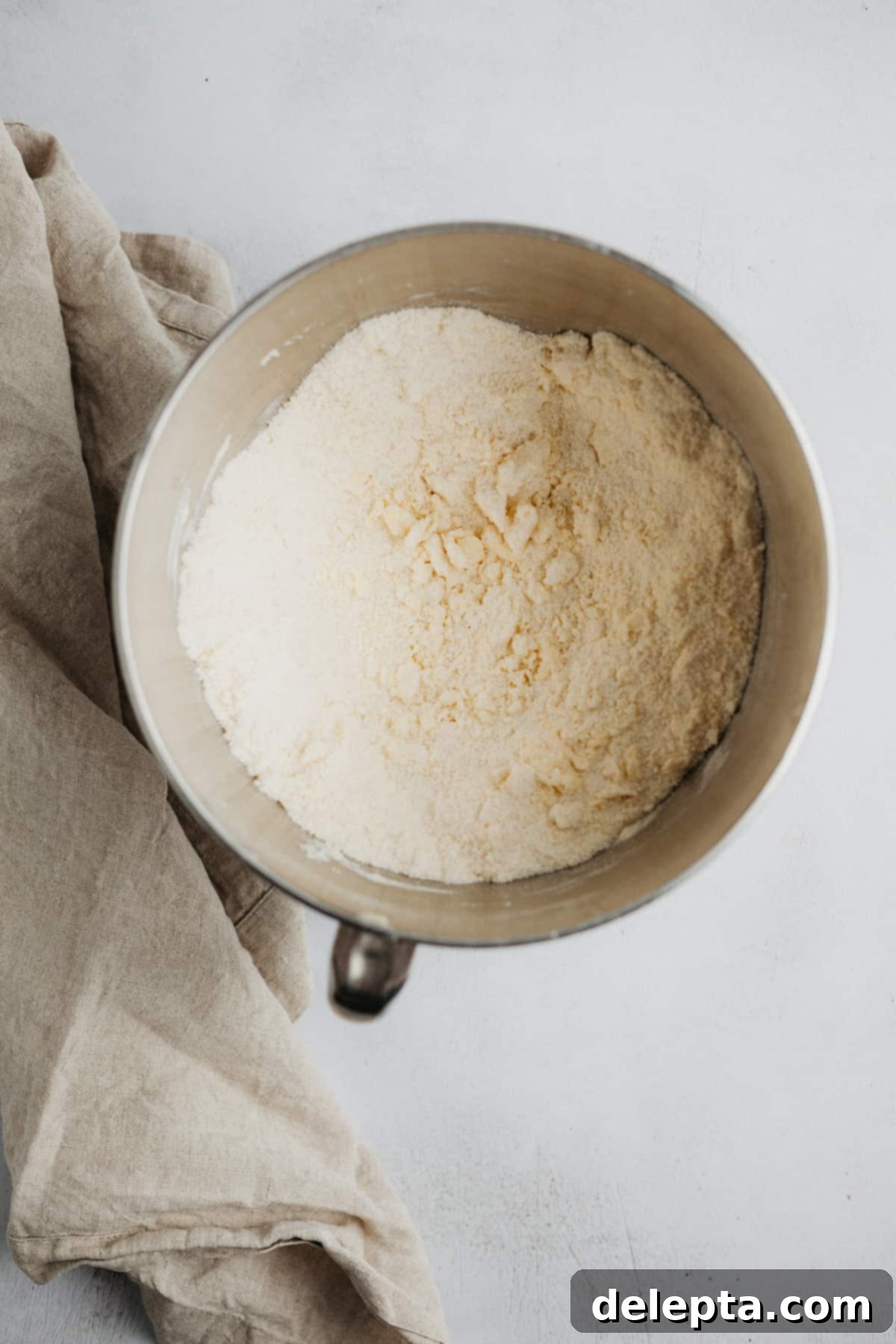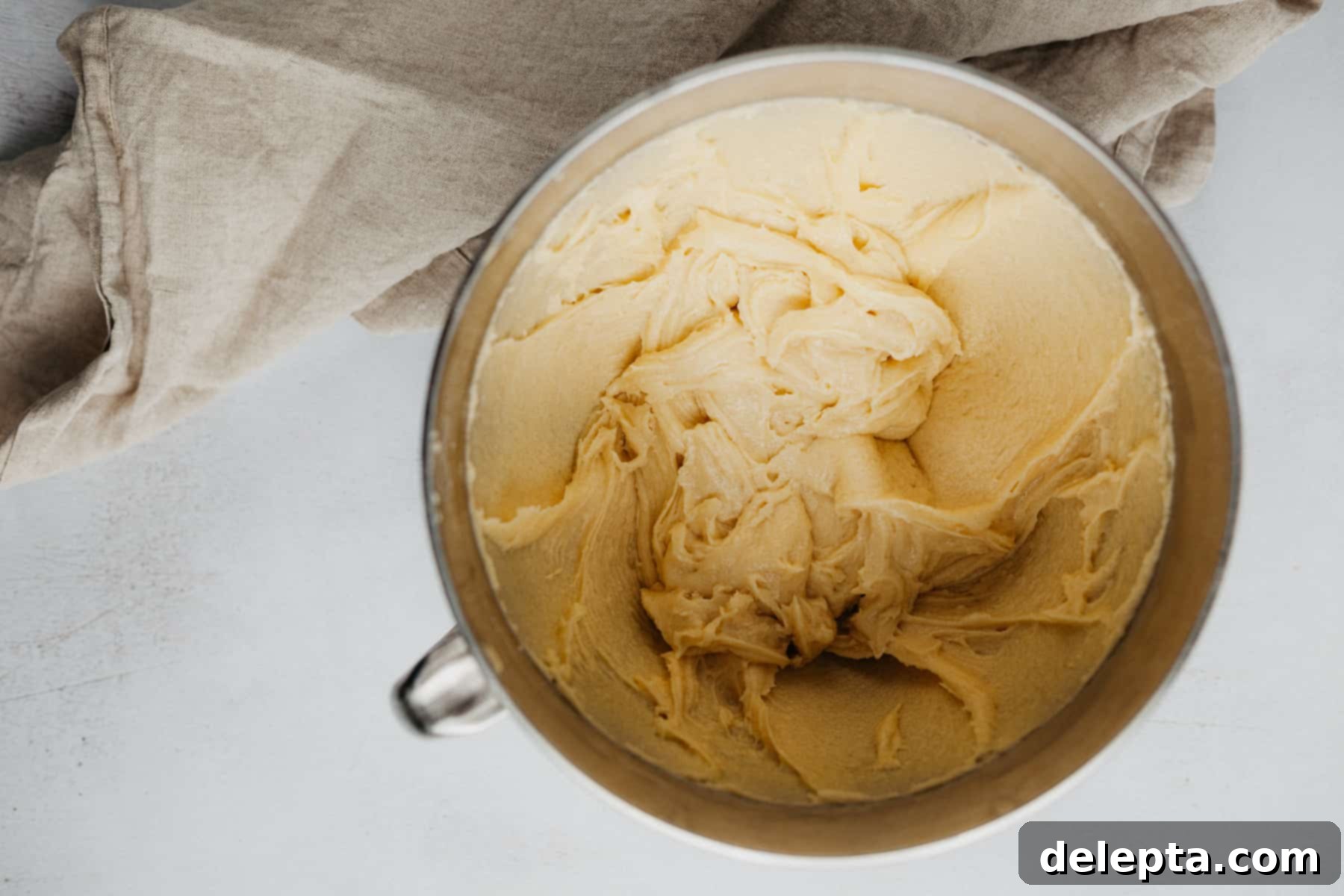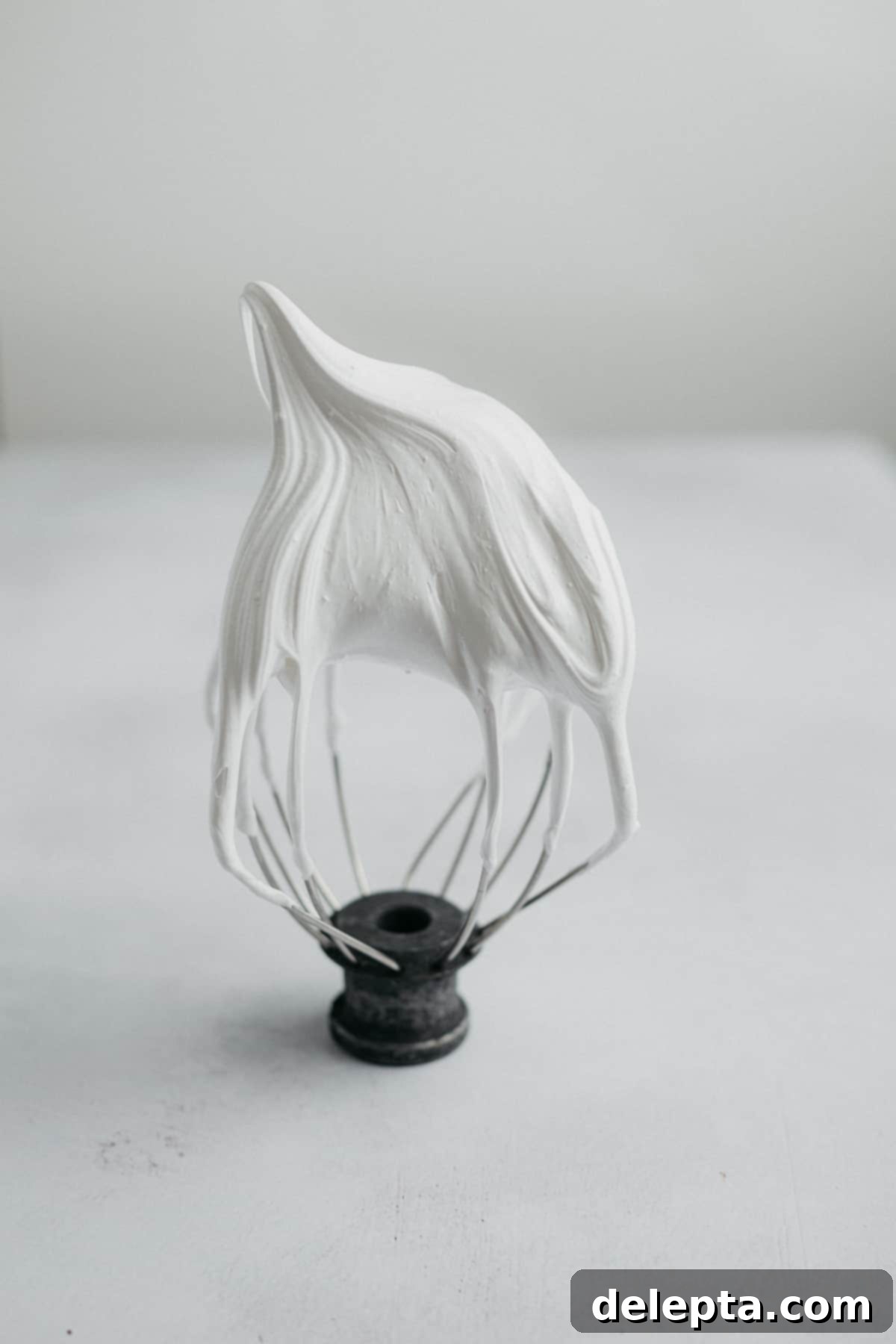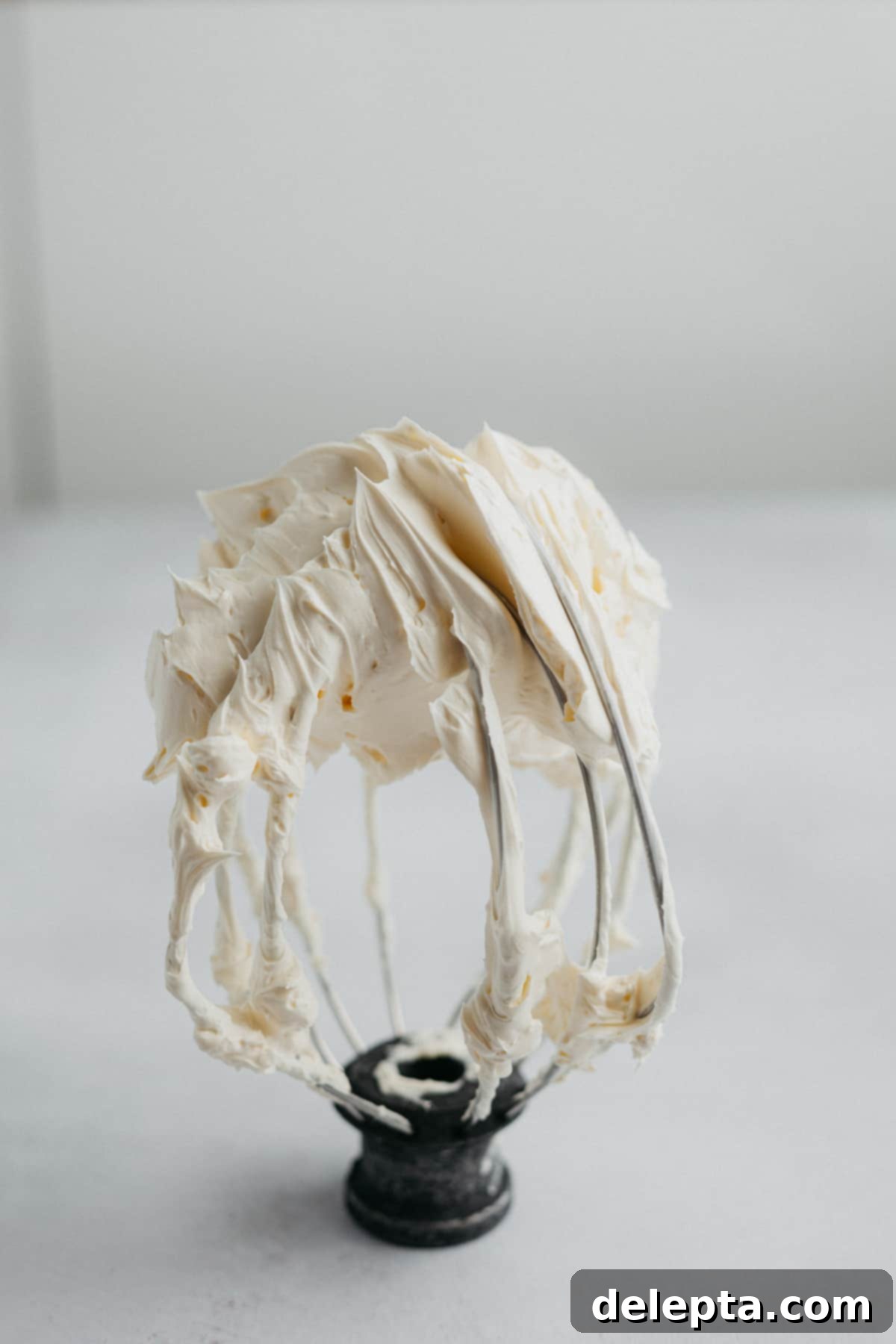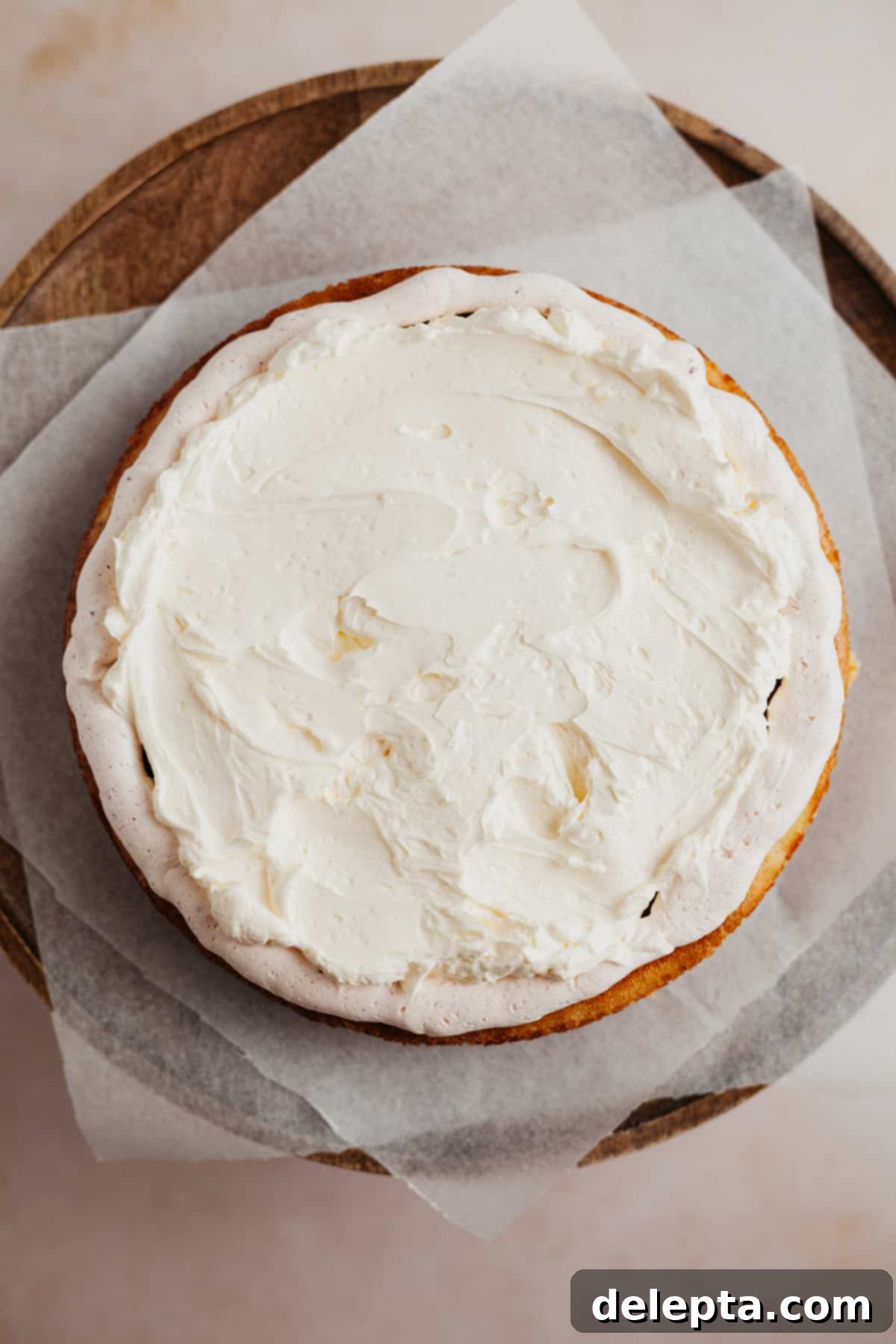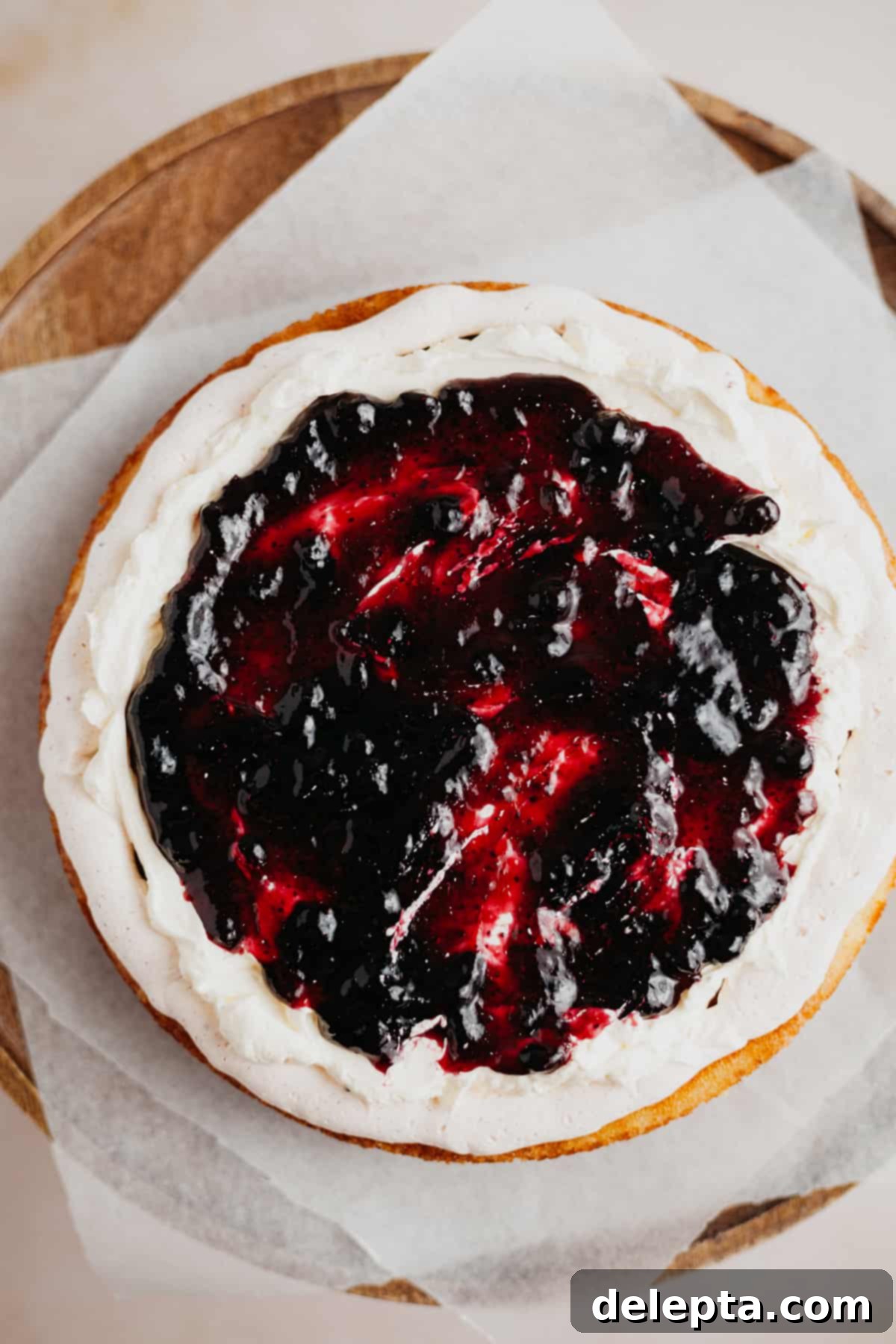Ultimate Blueberry Jam Cake with Velvety Swiss Meringue Buttercream: A Spring & Summer Delight
Welcome to your new favorite celebration cake! This exquisite blueberry jam cake is an absolute showstopper, making it the ideal centerpiece for any Spring or Summer gathering. Imagine layers of tender, moist vanilla cake, generously filled with a creamy vanilla Swiss meringue buttercream and bursts of sweet, vibrant blueberry jam. It’s then elegantly frosted with a luscious blueberry Swiss meringue buttercream, creating a symphony of flavors and textures in every bite. If the thought of making Swiss meringue buttercream seems daunting, don’t worry! I’m here to guide you step-by-step through creating this luxurious, bakery-worthy frosting that will elevate your homemade cakes to professional heights.
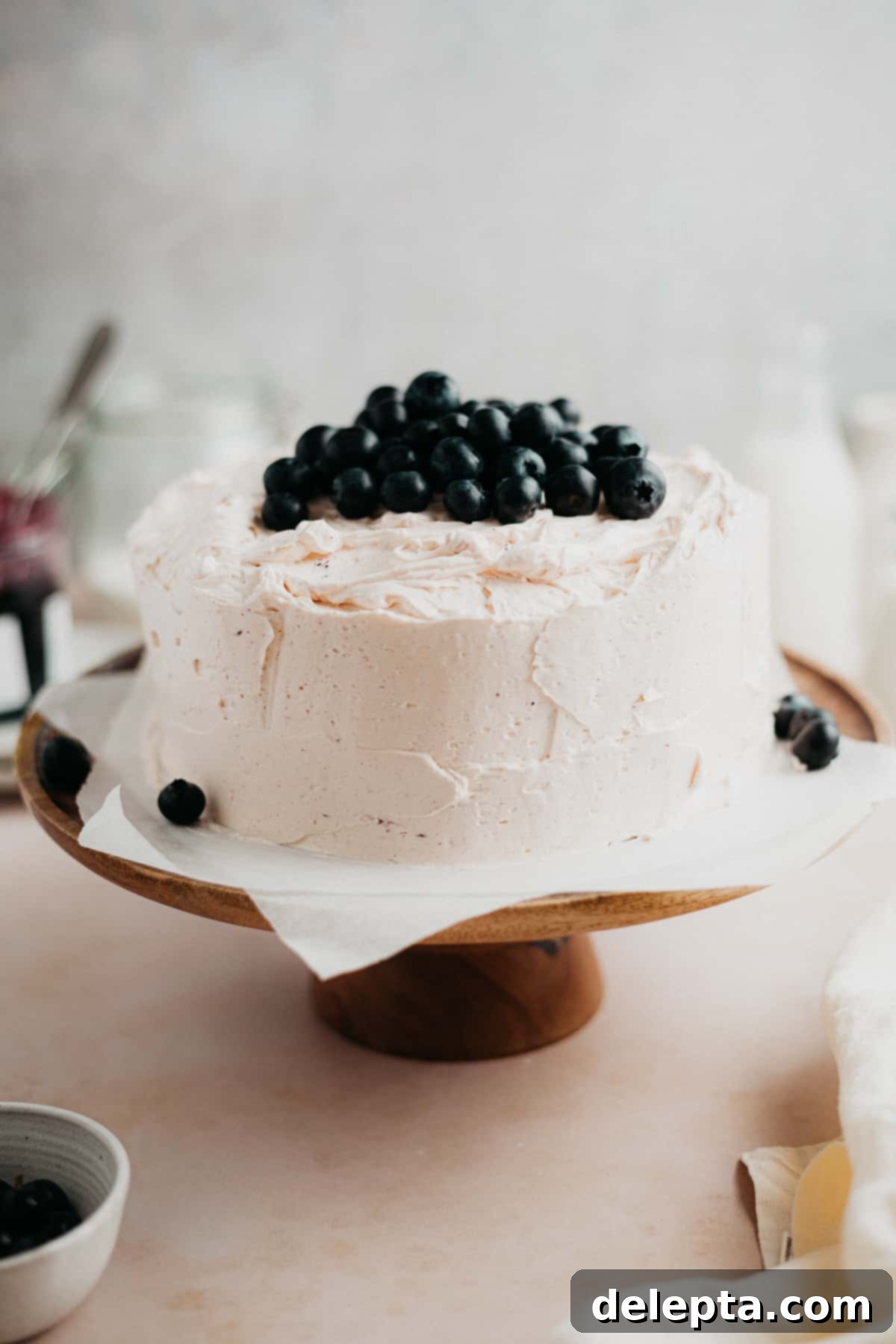
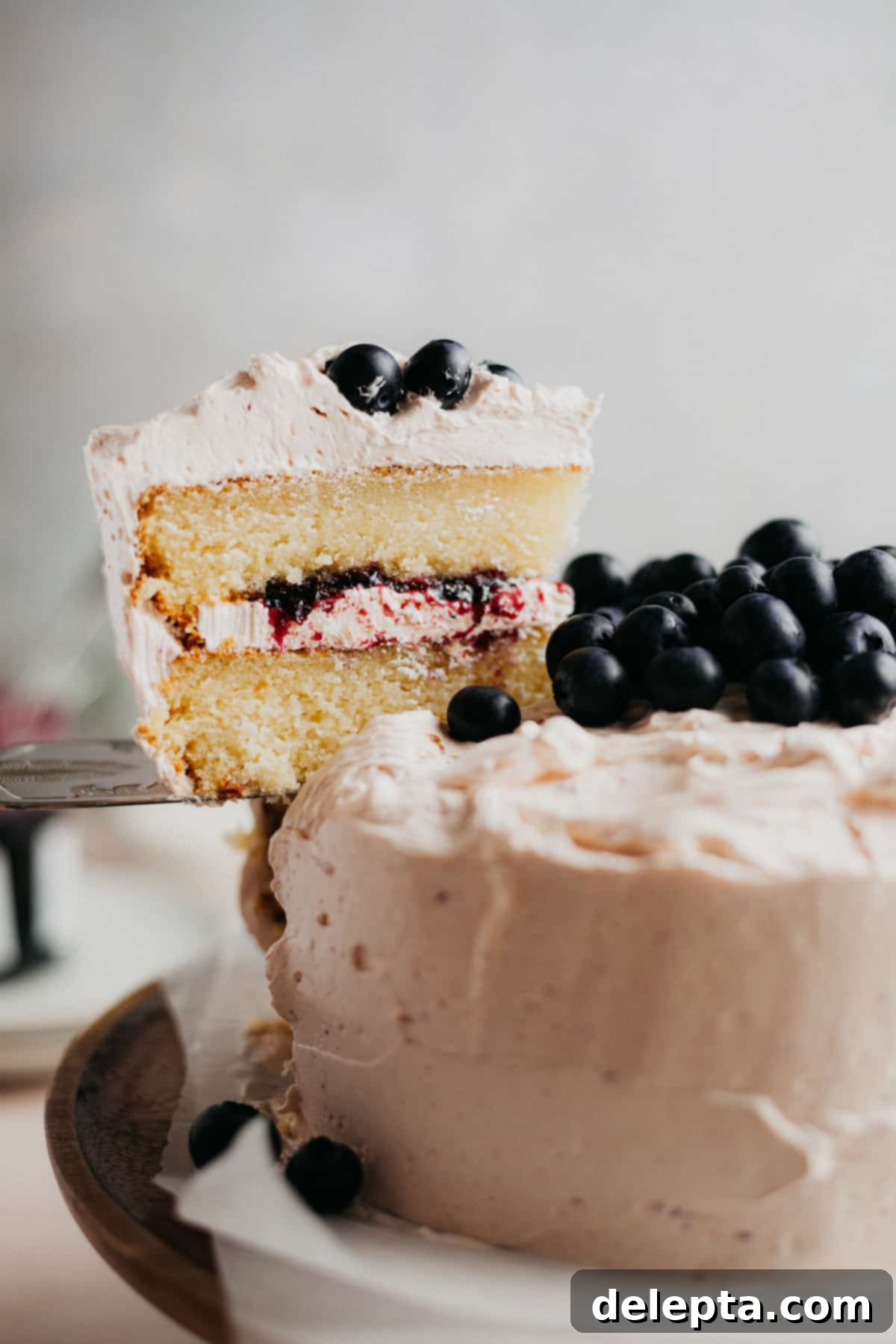
Why You’ll Adore This Blueberry Jam Cake
This isn’t just any cake; it’s a creation designed to delight all your senses. From its incredible flavor profile to its delicate texture and stunning appearance, this blueberry jam cake is truly special. Here’s a closer look at what makes this recipe a must-try for any home baker:
- Flavor Harmony: The foundation is a rich, buttery vanilla cake, providing a comforting and classic base. It’s perfectly complemented by a creamy vanilla Swiss meringue buttercream in the filling, offering a subtle sweetness and velvety mouthfeel. The star of the show, however, is the vibrant, fruity blueberry jam tucked between the layers, adding a delightful tang and juiciness. Finally, the entire cake is enrobed in a light and airy blueberry jam buttercream, infusing every bite with fresh, berry goodness. This thoughtful combination creates a harmonious balance of sweet vanilla and bright blueberry, making it an irresistible pairing for the freshness of Spring and Summer.
- Exquisite Texture: Prepare for an unparalleled textural experience. The vanilla cake boasts an incredibly soft, tender crumb, achieved through the unique reverse creaming method. This technique ensures a finer, more delicate cake structure that simply melts in your mouth. Contrasting beautifully with the cake is the dreamy, silken Swiss meringue buttercream, renowned for its smooth, non-gritty consistency that’s far less sweet than traditional buttercreams. The fresh blueberries often used as a garnish not only add visual appeal but also provide tiny bursts of juicy fruit, contributing another layer of delightful texture.
- Achievable Elegance: While the mention of Swiss meringue buttercream might suggest complexity, I promise it’s 100% worth the effort. It requires a bit more attention than a simple American buttercream, but the resulting luxurious finish and sophisticated flavor are truly transformative. The cake itself is surprisingly straightforward, built on a reliable recipe that makes it one of my personal favorites. With a little patience and my detailed instructions, you’ll master this bakery-quality dessert.
- Time Commitment: Baking a beautiful cake is a labor of love, and this one is no exception. The most time-intensive part is crafting the Swiss meringue buttercream, which typically takes around 30-40 minutes of active preparation. You’ll also need to factor in time for the cake layers to bake and cool completely, which is crucial for successful assembly. Additionally, chilling the cake between frosting stages is key to a clean, polished finish. However, many components can be prepared in advance, allowing for a more relaxed baking experience.
- A Definitive Keeper: Absolutely, I would make this cake again and again! Its irresistible flavor and elegant presentation make it perfect for a wide range of occasions, from casual family gatherings to more formal celebrations like birthdays, anniversaries, or baby showers. Whether you’re craving a taste of Spring or a refreshing treat for a warm Summer day, this blueberry jam cake is guaranteed to impress.
Gather Your Ingredients for This Magnificent Cake
To embark on this delightful baking adventure, you’ll need a selection of quality ingredients. Having everything prepped and at the correct temperature before you begin is a golden rule for successful baking, especially with recipes involving delicate techniques like Swiss meringue buttercream. Below are the key components for both the moist vanilla cake and the luxurious buttercream.
-

Cake Ingredients -

Buttercream Ingredients
Important Ingredient Notes for Best Results
Understanding the role of each ingredient can make a significant difference in the outcome of your cake. Here are some detailed notes to help you achieve perfection:
- Butter: For both the cake and the buttercream, I highly recommend using European-style unsalted butter. This type of butter has a higher fat content and lower water content compared to conventional American butter, which translates to a richer, creamier flavor and a superior texture in your baked goods. Crucially, ensure your butter is at **room temperature** for both the cake batter and the Swiss meringue buttercream. For the cake, soft butter creams beautifully; for the buttercream, room temperature butter is essential for achieving that smooth, emulsified texture without curdling.
- Yogurt: The secret to this cake’s exceptional moistness and tender crumb lies in full-fat yogurt. Its acidity reacts with the baking soda, contributing to a light and airy texture, while its fat content adds richness. Do not substitute it with more milk or a low-fat alternative, as this will compromise the cake’s texture and moisture level.
- All-purpose Flour: Thanks to the reverse creaming method, which minimizes gluten development, this vanilla cake is inherently soft and tender. Therefore, there’s absolutely no need to reach for cake flour in this recipe. Standard all-purpose flour works beautifully, providing just enough structure without making the cake dense.
- Eggs: Just like butter, eggs play a vital role and should always be at room temperature when baking a cake. Room temperature eggs emulsify more easily with other ingredients, creating a smoother, more uniform batter and a finer crumb. This is particularly important for the egg whites used in the Swiss meringue buttercream, as they whip up to their maximum volume when not cold.
- Granulated Sugar: Beyond sweetness, sugar contributes to the cake’s moisture and tenderizes the crumb. For the Swiss meringue buttercream, it dissolves with the egg whites to create a stable meringue.
- Blueberry Jam: Opt for a good quality blueberry jam, preferably one with a strong berry flavor and not overly sweet, to truly shine through in the cake. You can even use homemade blueberry jam for an extra special touch!
Crafting the Perfect Vanilla Cake Layers
This vanilla cake recipe is a true gem, so simple to execute yet yielding consistently outstanding results. It’s a staple in many of my recipes, and its reliance on the reverse creaming method is the key to its famously soft and tender crumb. This method works by coating the flour in fat first, inhibiting gluten development and resulting in a cake that’s incredibly delicate and moist. Let’s walk through the steps to bake these perfect layers for your blueberry jam cake.
First and foremost, the secret to a beautifully emulsified batter and even bake is ensuring all of your ingredients are at room temperature. This is non-negotiable! Take out your eggs, butter, milk, and yogurt at least two hours before you plan to start baking. This seemingly small step significantly impacts the final texture of your cake.
Begin by mixing all the dry ingredients together in the bowl of your stand mixer fitted with the paddle attachment. This includes your flour, sugar, baking powder, baking soda, and salt. Give them a good mix on low speed until they are thoroughly combined. Next, add your cubed, room temperature butter directly into the dry mixture. Continue to mix on low speed until the mixture resembles coarse, damp sand. This process coats the flour with butter, preventing excessive gluten development and ensuring a tender crumb.
Now, it’s time to incorporate the eggs. Add your egg whites one at a time, mixing thoroughly after each addition. It’s crucial to fully scrape the bowl after each addition, ensuring every bit of butter and flour is incorporated. Skipping this step can lead to a streaky or inconsistent batter, resulting in an unevenly textured cake layer. Trust me, that “weird” looking last bit of batter when you pour it into the pan is usually a sign of insufficient scraping. Finally, add your whole egg and mix until just combined, again scraping the bowl well.
In a separate large jug or bowl, thoroughly whisk together your milk, yogurt, and vanilla extract. This creates your wet ingredient mixture. With the mixer running on low speed, slowly pour in about a third of the wet ingredients into the butter-flour mixture. Mix until just combined. Repeat this process two more times, adding the remaining wet ingredients in two additions, mixing slowly after each. Your batter will appear quite liquidy at this stage, which is perfectly normal for the reverse creaming method. Continue to beat the batter on low speed for another 2 minutes, ensuring everything is well incorporated without overmixing.
Once your batter is ready, divide it evenly into your greased and lined cake pans. For consistent layers, I recommend using a kitchen scale to measure the batter into each pan. Bake according to the recipe instructions, and remember to let them cool completely before attempting to frost. Patience is a virtue in baking!
Mastering the Velvety Swiss Meringue Buttercream
Prepare to fall in love with Swiss meringue buttercream! This isn’t your average frosting; it’s a luxurious, silky-smooth, and less sweet alternative to traditional American buttercream. Often found gracing the most exquisite cakes in high-end bakeries, its rich, buttery flavor and velvety texture are truly unparalleled. Forget everything you thought you knew about grainy, overly sweet frostings – this is the elevated experience your homemade cakes deserve.
Swiss meringue buttercream is created by gently heating egg whites and sugar over a double boiler until the sugar fully dissolves, then whipping this warm mixture into a gloriously stiff and glossy meringue before gradually incorporating butter. A few critical preparatory steps will ensure your success: always start with an impeccably clean and dry bowl (any grease can prevent your meringue from whipping properly), and be absolutely certain there are no traces of egg yolk in your egg whites. Even a tiny bit of yolk can ruin the meringue.
To begin, set up your double boiler. Place a small saucepan over medium-low heat with about an inch of water, allowing it to come to a gentle simmer. In the bowl of your stand mixer (ensure it’s heatproof), combine your egg whites and granulated sugar. Carefully place the mixer bowl over the simmering water, making sure the bottom of the bowl does not touch the water. This is vital to prevent the egg whites from scrambling. Whisk the mixture constantly while it heats. The goal here is to gently dissolve the sugar and pasteurize the egg whites. You’ll know it’s ready when you can rub a small amount of the mixture between your fingers and feel absolutely no sugar granules, and it typically reaches a temperature of around 160°F (71°C).
Once the sugar is completely dissolved and the mixture is smooth, remove the bowl from the heat and attach it to your stand mixer. Using the whisk attachment, begin to whip the mixture on high speed for approximately 10-12 minutes. During this time, the mixture will transform into a thick, shiny, and stable meringue with stiff, glossy peaks. As it whips, the bowl should cool down to room temperature. This cooling process is crucial; if the bowl is still warm when you add the butter, the butter will melt, and your buttercream will become a soupy mess.
When the meringue is cool and stable, reduce the mixer speed to low. Now, it’s time to add the room temperature butter, one tablespoon at a time. Be patient with this step! It’s very common for the mixture to look a bit “curdled” or broken after the first few additions of butter. Don’t panic; this is a normal phase in the Swiss meringue buttercream process. Keep mixing on low speed, and as you continue to add all the butter, the mixture will miraculously come together, transforming into the smooth, creamy buttercream you’re aiming for. Finally, add your vanilla extract and salt, mixing until just combined and evenly distributed.
For this specific blueberry jam cake, we’ll divide the buttercream. I scooped out about ¾ cup of the plain vanilla Swiss meringue buttercream and set it aside to be used as the vanilla filling. To the remaining buttercream, I gently folded in the blueberry jam, creating a beautifully flavored and colored blueberry Swiss meringue buttercream for the exterior frosting. This split flavoring adds an extra layer of surprise and delight to the cake.
Swiss Meringue Buttercream Troubleshooting Tips
While Swiss meringue buttercream is utterly delicious, it can sometimes be a bit temperamental. But fear not, most issues are easily fixable! Here are a couple of common problems and their solutions:
- “My buttercream looks soupy!” This is a very common issue, and it typically happens for one of two reasons: either you didn’t allow the meringue to cool sufficiently before adding the butter, or your butter itself was too warm to begin with. The solution is simple: continue whipping! You can also try holding a bag of ice or a cold compress against the bottom of the stand mixer bowl while it whips to help cool it down faster. Keep whipping on medium-high speed; often, with enough time, it will come together. Patience is key!
- “It looks way too curdled and cold, like cottage cheese!” If your buttercream appears overly curdled, chunky, and stubbornly refuses to smooth out, it’s usually an indication that your butter was too cold when added. Again, don’t despair! You have a couple of options. You can either continue to whip the buttercream on medium speed, allowing the friction from the mixer to gently warm the butter over time. Alternatively, for a quicker fix, you can carefully use a blowtorch or even a hairdryer to gently warm the bottom and sides of your mixer bowl for a few seconds. Then, continue whipping. This gentle heat will help the butter soften and emulsify into the meringue, bringing your buttercream back to that silky smooth consistency.
Mastering the Art of Cake Assembly
Assembling a layered cake might seem like the most intimidating part of the baking process for some, but I promise you, with a few simple techniques, you can achieve a beautifully presented (and incredibly delicious) cake without any fancy bakery-level skills. The key to success here is preparation and patience. Before you even think about frosting, make absolutely sure your cake layers are completely cool. I often bake my cake layers the night before and wrap them tightly in clingfilm to keep them moist, storing them at room temperature until I’m ready to assemble the next day. This also gives them time to firm up, making them much easier to handle.
- Layering the First Fill: Start by placing your first cooled cake layer onto your serving plate or cake stand. Using the vanilla Swiss meringue buttercream you set aside, pipe a generous dam of frosting around the very edge of the cake layer. This “dam” acts as a protective barrier, preventing the delicious blueberry jam filling from oozing out the sides once the cake is assembled. Then, dollop the remaining vanilla frosting in the middle of the cake and use a small offset spatula to gently spread it into an even, smooth layer within the piped dam.
- Adding the Blueberry Jam: Now for the star filling! Take your blueberry jam and use another small offset spatula or a spoon to evenly spread it over the vanilla buttercream layer. Be careful not to let the jam touch the piped frosting dam, as this could cause it to seep out later. The goal is a neat, contained layer of jam.
- Crumb Coat and Chill: Carefully place your second cake layer directly on top of the jam-filled first layer, pressing down very gently to ensure it’s level. Next, scoop out some of your blueberry Swiss meringue buttercream and apply a very thin layer all over the top and sides of the entire cake. This is called a “crumb coat” and its purpose is to trap any loose cake crumbs, preventing them from mixing into your final, pristine layer of frosting. Don’t worry about making it perfectly smooth; just ensure there are no empty spaces, almost like spackling the cake. Once the crumb coat is applied, place the cake in the fridge for at least 30 minutes to allow the frosting to firm up. This step is crucial for a clean final frost.
- The Final Frosting Flourish: Once your cake is thoroughly chilled and the crumb coat is firm, take it out of the fridge. Now, apply the remaining blueberry Swiss meringue buttercream to the entire cake. You can achieve various beautiful finishes here. For a classic look, use a cake scraper to smooth out the sides of the cake. For the top, you can create elegant swoops and swirls with the back of a small spoon or spatula, adding a charming, rustic touch. Alternatively, you can smooth the entire cake for a more refined appearance.
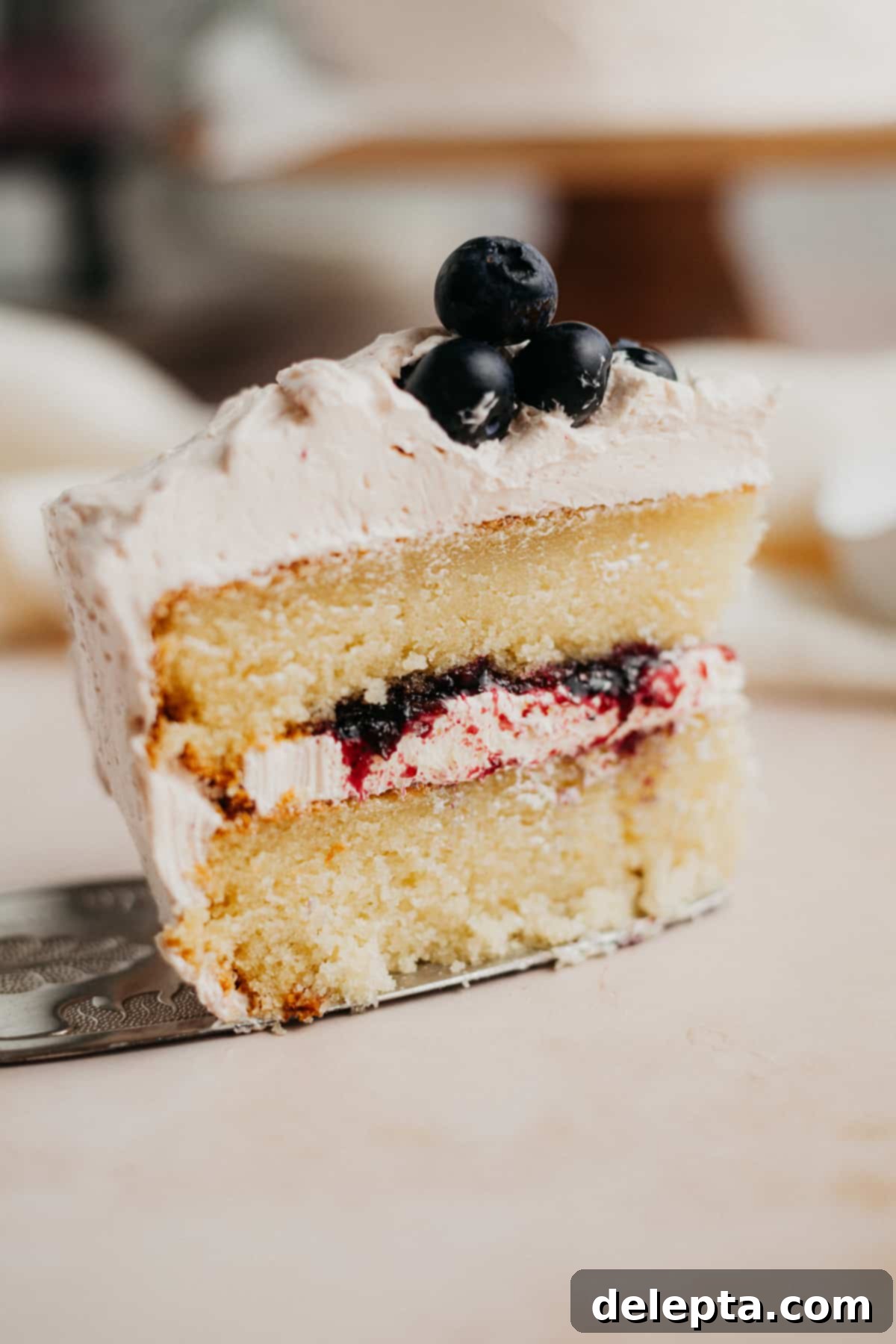
Frequently Asked Questions About Your Blueberry Jam Cake
Here are answers to some common questions that might pop up during your baking journey:
Absolutely! While the Swiss meringue buttercream is truly special, this versatile vanilla cake would be equally delicious with other frostings. A classic cream cheese frosting, similar to the one found in my pistachio carrot cake recipe, would pair wonderfully with the blueberry jam, offering a tangy counterpoint. You could also try a simple vanilla bean American buttercream if you prefer a sweeter, less involved option.
Due to the Swiss meringue buttercream, this cake is best stored in the refrigerator. Place it in an airtight cake carrier or cover it loosely with plastic wrap to prevent it from drying out or absorbing refrigerator odors. It will stay fresh and delicious for up to 4 days.
Yes, smart planning can make baking much less stressful! You can prepare the cake layers up to two days in advance. Once completely cooled, wrap each layer individually in clingfilm and store them at room temperature. For longer storage, the cake layers can be frozen for up to two weeks. To use, simply defrost them on your kitchen counter for about an hour or two. The Swiss meringue buttercream can also be made ahead and frozen in an airtight container for up to two weeks. When ready to use, thaw it at room temperature and then re-whip it in your stand mixer on medium-high speed until it becomes smooth and fluffy again.
Achieving clean, professional-looking slices is easier than you think! The trick is to use a large, sharp knife. Before each cut, run the knife under hot water for a few seconds. Immediately wipe it completely dry with a kitchen towel. The warmth from the blade will glide through the frosting and cake without dragging or smudging, resulting in a perfectly clean cut. Repeat this process for every single slice, and your cake will look impeccable.
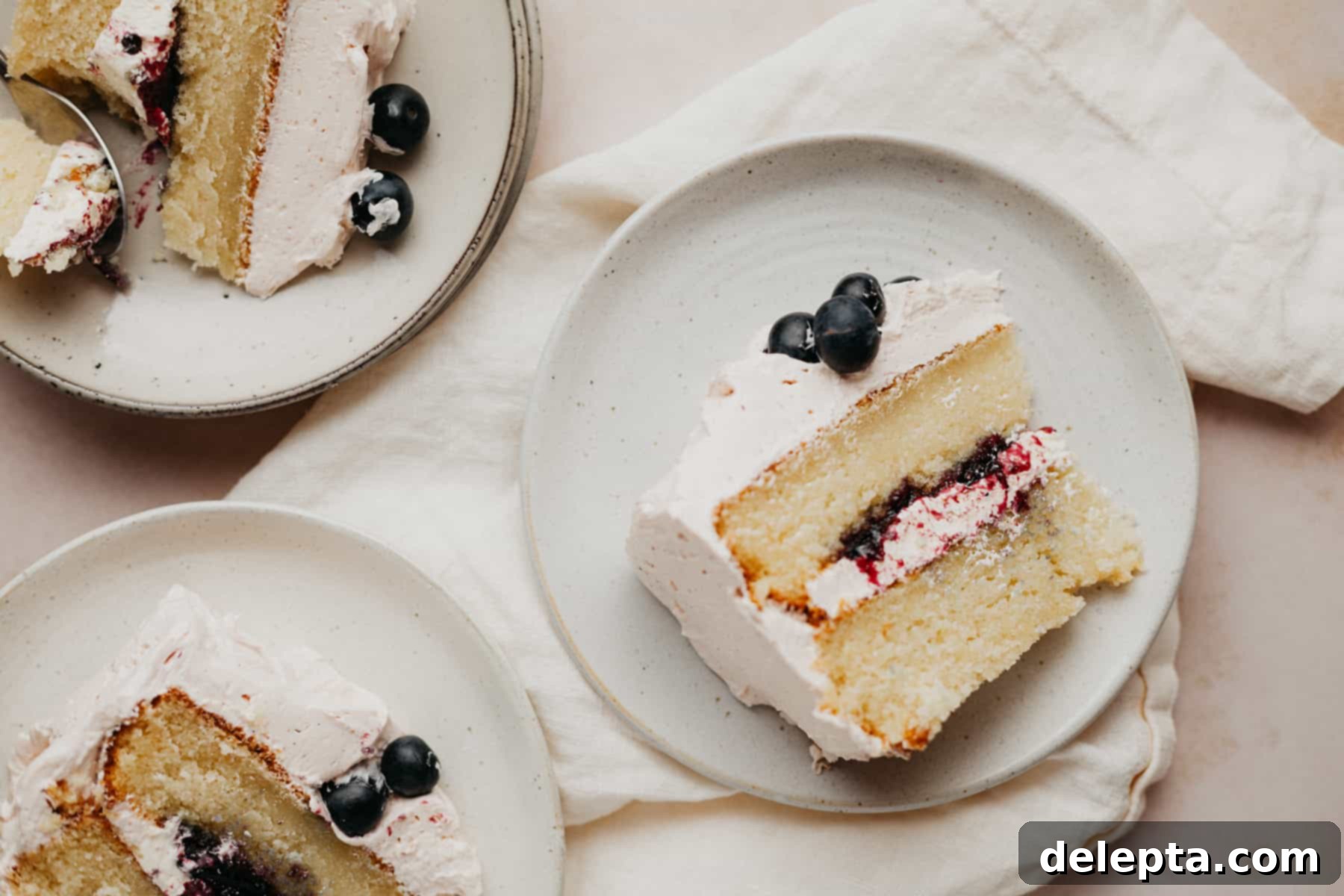
Explore More Delicious Cake Recipes:
If you loved this blueberry jam cake, you might enjoy trying some of my other popular cake creations:
- Strawberry Layered Cake
- Blueberry Almond Lemon Cake
- Salted Caramel Chocolate Cake
I absolutely love seeing your baking creations! If you’ve made this delightful blueberry jam cake, please make sure to tag me on Instagram @alpineella and leave a review below to let me know how it turned out. Your feedback is truly appreciated! For even more baking ideas and inspiration, feel free to follow me on Pinterest.
Recipe
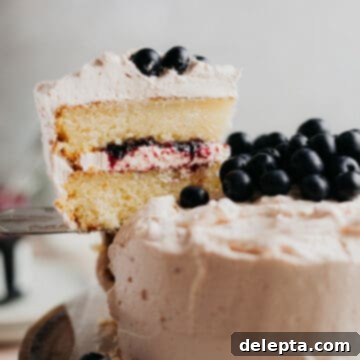
Blueberry Jam Cake
Ella Gilbert
Pin Recipe
Save RecipeSaved!
Equipment
-
2 x 8″ cake pans
Ingredients
Cake
- 285 grams all-purpose flour
- 170 grams unsalted butter room temperature
- 333 grams granulated sugar
- 2 teaspoon baking powder
- ½ teaspoon baking soda
- 1 ½ teaspoon kosher salt
- 4 egg whites room temperature
- 1 egg room temperature
- 2 teaspoon vanilla extract
- 240 ml whole milk room temperature
- 120 ml yogurt room temperature
Swiss Meringue Buttercream
- 5 egg whites room temperature
- 400 grams granulated sugar
- ¼ teaspoon kosher salt
- 678 grams unsalted butter room temperature
- 1 teaspoon vanilla extract
- 35 grams blueberry jam
Assembly
- 85 grams blueberry jam
Instructions
Cake
-
Preheat your oven to 350°F/175°C. Grease and line two 8-inch cake pans.
-
In the bowl of a stand mixer with the paddle attachment, mix all of the dry ingredients on slow speed until blended. Add in your butter and mix on low until it looks like damp sand
-
Add your egg whites one at a time, and then your whole egg. Beat well after each addition, making sure you scrape the sides and bottom of the bowl.
-
In a small jug, whisk together the vanilla extract, yogurt and milk.
-
Slowly pour in one-third of the milk mixture into the mixing bowl. With the speed on low, mix together. Be careful as it may spill! Pour in the rest of the milk in two more additions, mixing slowly after each addition. Beat for 2 minutes. Your batter will be liquidy.
-
Pour the batter into your pans, it’s about 650g per cake tin.
-
Bake for 25-30 minutes. A toothpick inserted into the cake will come out clean. Remove from the oven and let cool for 15 minutes. Take the cake out of the tin and let it cool completely.
Swiss Meringue Buttercream
-
Fill a small saucepan with about an inch of water, bring to a simmer
-
In a stand mixer bowl, stir the egg whites and sugar until combined. Place the bowl over the saucepan. Make sure you’re constantly whisking the sugar mixture until the sugar dissolves. Feel the mixture between your fingers to check if there are granules
-
Once it is smooth, remove the bowl from heat and place it in your stand mixer, with a whisk attachment. Whisk on medium high until you have stiff, glossy peaks, about 10-12 minutes. Touch the bowl, at this point it should have cooled down.
-
Reduce speed to low and add the butter, a tablespoon at a time, and beat until combined. Add the vanilla and salt
-
Remove about ½ cup of frosting and set aside. Pour the jam into the rest of the frosting and mix to combine. Use immediately
Assemble
-
Take about ½ a cup of blueberry frosting in a piping bag and pipe a dam around the edge of one of the cakes. Scoop out the vanilla frosting and use an offset spatula to spread the frosting evenly inside the dam. Take your jam and use a spoon to spread the jam on top of the vanilla frosting.
-
Gently press down your second layer on top. Crumb coat the sides and top of cake by spreading a thin layer of frosting, then chill the cake in your fridge for about 30 minutes.
-
Take the cake out and frost it with the rest of the buttercream.
-
Keep your cake in the fridge for up to 4 days.
Nutrition
